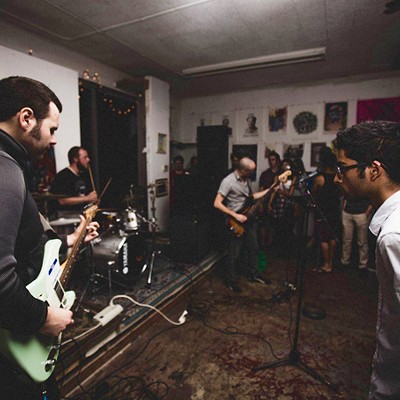More than 3,000 years ago, a privileged 19-year-old Egyptian, given to hunting from his chariot, took a spill that shattered his leg just above the knee.
The injury had to have been excruciating, in a time when little could be done but rub ointment and pray. For pain, there might have been beer.
Then an infection set into the bone. The throbbing ache went to fever, probably delirium, then death. Incense burned, gongs sounded and priests gashed themselves with bronze knives.
So passed Tutankhamun, the "Boy King of Egypt," into the next world, according to the traveling exhibit making a stop at the Dallas Museum of Art. There have been many theories into the young king's death over the years, and this is the latest.
Like a lot of Egyptian royalty, there were great plans to send everything with him that he might need in the next life: treasure, beloved items, old toys from his boyhood, his favorite knife, his royal symbols of crook and flail, his crown and no fewer than six chariots. All this and more joined him in the tomb on the journey to forever.
WORLD TOUR
As circumstance would have it, that journey appears to have included a world tour for a lot of his property. The "Tutankhamun and the Golden Age of the Pharaohs" exhibit is on display now through May 17, 2009, at the Dallas Museum of Art, about three hours south of the metro. That is as close as the exhibit will reach Oklahoma.
Delaynna Trim, curator of collections of the Mabee-Gerrer Museum of Art in Shawnee at St. Gregory's University, is planning a field trip to view the exhibit. She said Tutankhamun, or "Tut," captured the imagination of the public because of the context given his life by the treasures found in his tomb.
"The important thing about King Tut is that his tomb was found relatively untouched. He was actually still there "? his sarcophagus, his wealth, his riches. That hadn't been seen before," Trim said. "Before, (priests) ended up moving the mummies so often, the grave robbers looted so much of the goods, that we didn't really see the opulence and wealth. Even the mummies themselves had been mistreated and stolen. Here, we actually have a king "¦ even though he was a boy king "¦ with all of his wealth. It really showed the opulence of the Egyptian age."
By all accounts, that opulence was staggering. Tut, who appears to have been a relatively minor king, had a multilayered gilded tomb of coffins nesting within one another, and the linen-wrapped body of the god-king lay inside, his face covered by the now-iconic golden mask, grasping the golden symbols of his office: the crook and flail.
The mask, a centerpiece of the legendary 1977 Tut tour, is not present with this exhibit. The fragile death mask is no longer allowed to leave Egypt, by order of the government. But the crook and flail are key artifacts in the Dallas exhibition, said Mark Lach, the exhibit designer. For those and other artifacts of the tour, this will likely be the last time any of them are seen outside of Egypt.
"With the new museum being built in Cairo, these objects will never travel again," said Lach, who also managed a tour of objects raised from the Titanic. "It truly is a unique opportunity to see these objects outside of Egypt."
DESIGN
He said the exhibit is designed to show not just the objects of Tutankhamun, but his life. The tour opens with a short film about Tut, narrated by actor Omar Sharif, and then progresses through the centuries of royals leading up to the time of the boy king in the end of the 18th Dynasty. We see the gold coffin of his great-grandmother; the weirdly elongated face of his notorious father, the "heretic" king; and then the life of Tutankhamun himself, along with his beloved wife and half-sister, Ankhesenamun.
Crossing the threshold into the personal exhibit of Tutankhamun himself is presented as tomb discoverer Howard Carter found it in 1922, complete with a silent film loop of the archeologist working at the site. The mummy and inner sarcophagus of Tut is not part of the exhibit; it has never left the Valley of the Kings in Egypt.
As one progresses through the exhibit, the fate of Tutankhamun draws closer, until the final room where the precious items found on his body "? his crown, his crook and flail and the solid gold knife, mirror-polished and sharp "? are displayed.
As with many who view the tomb, certain artifacts leap out in significance, even for the exhibit's designer. For Lach, the carefully sculpted wooden statue of Tutankhamun drives home the feeling that here was someone once alive, staring out from 3,000 years.
"It's the first artifact when you cross over in the discovery of the tomb," he said. "The reason that speaks to me is it is a very human representation of him. That has a personal connection to you. The eyes look right at you."
"?Ben Fenwick










